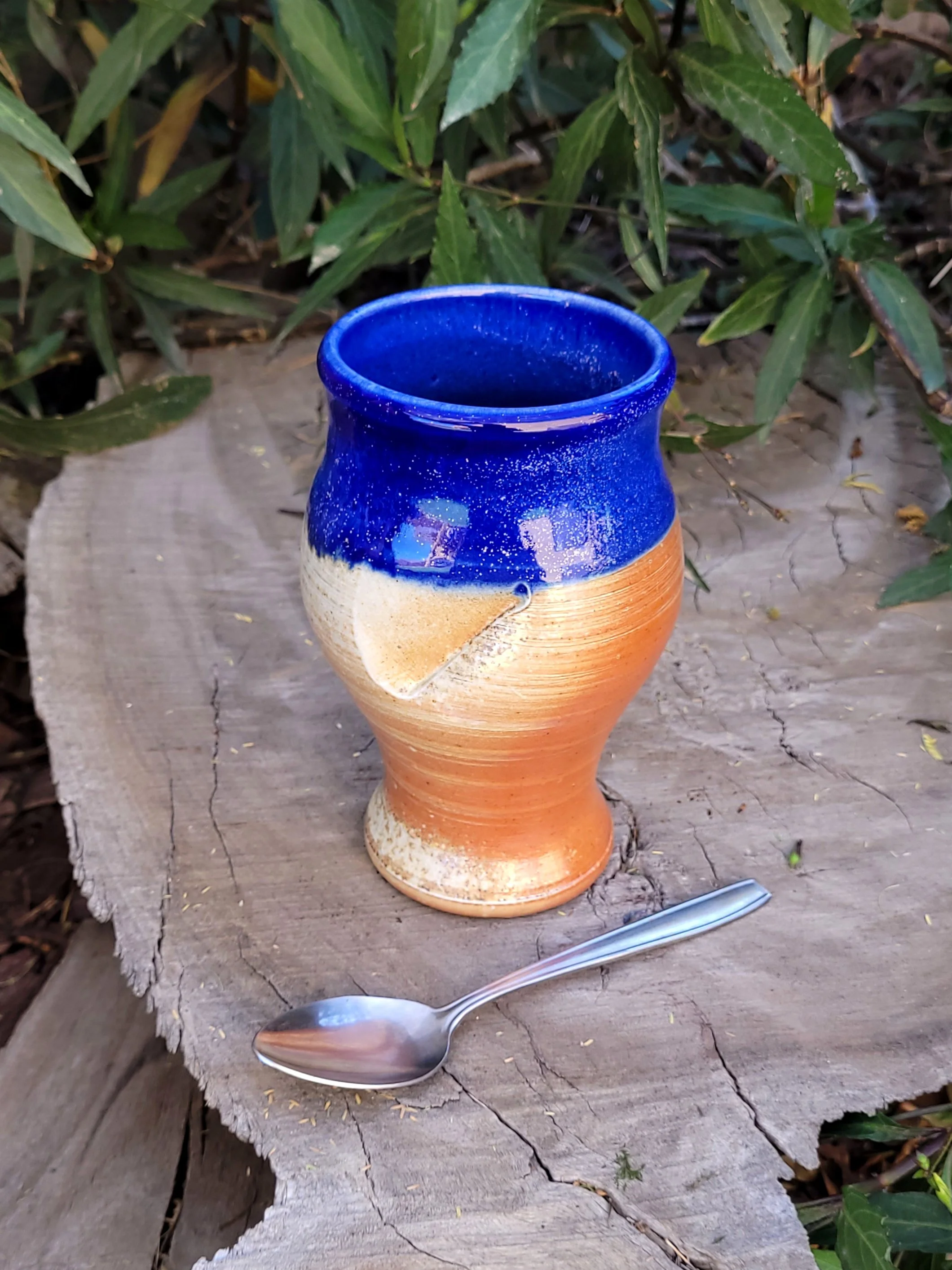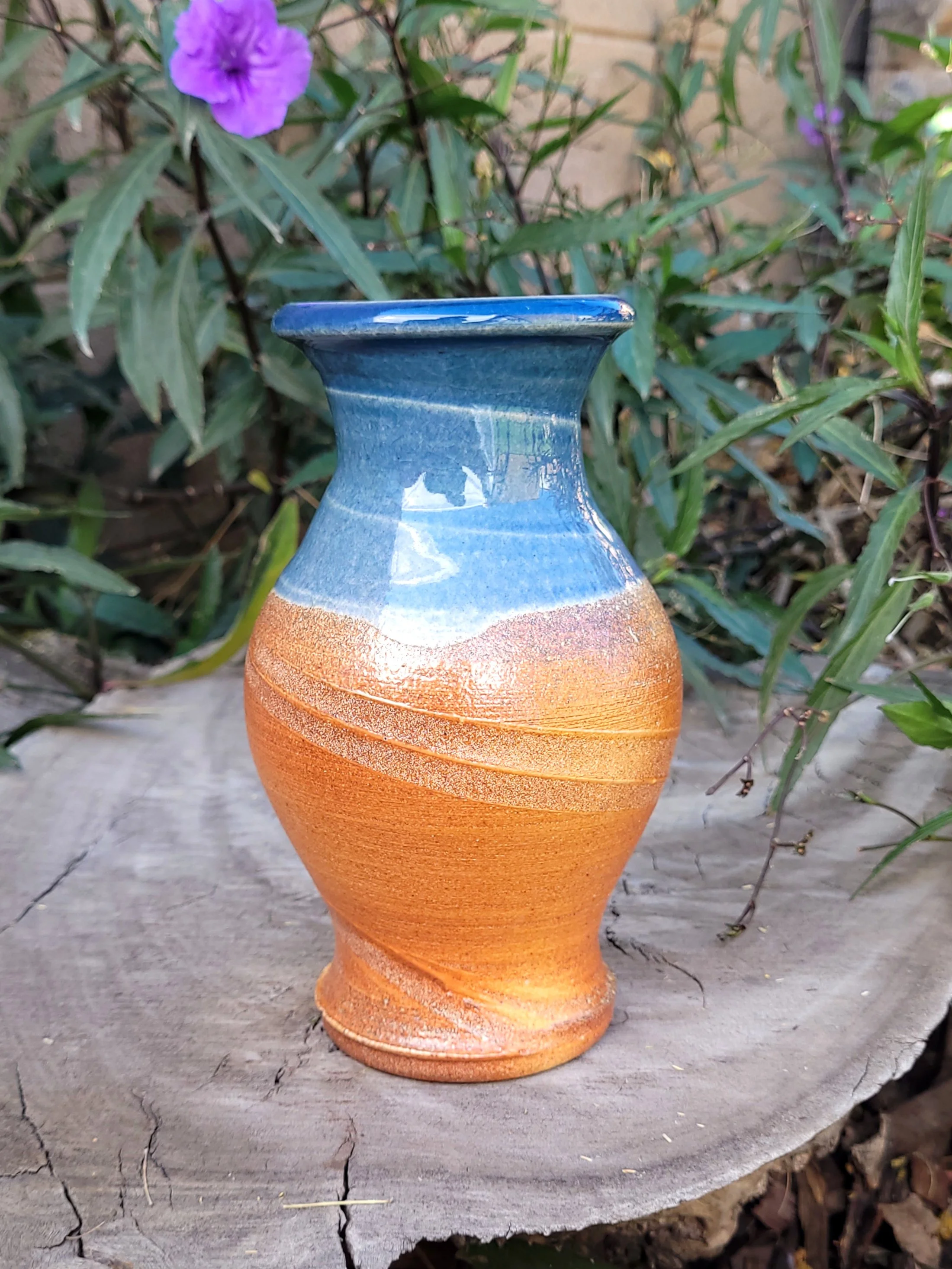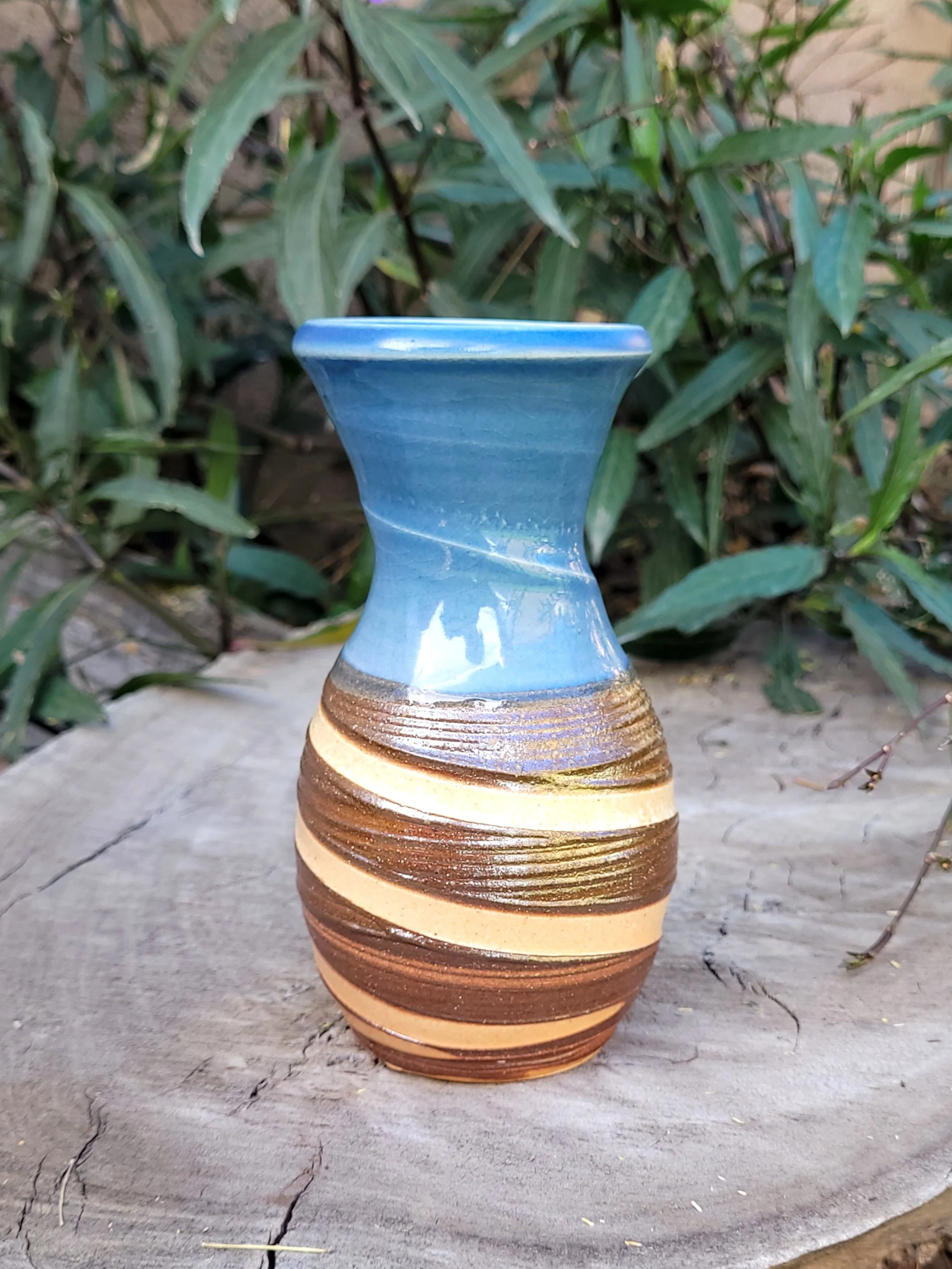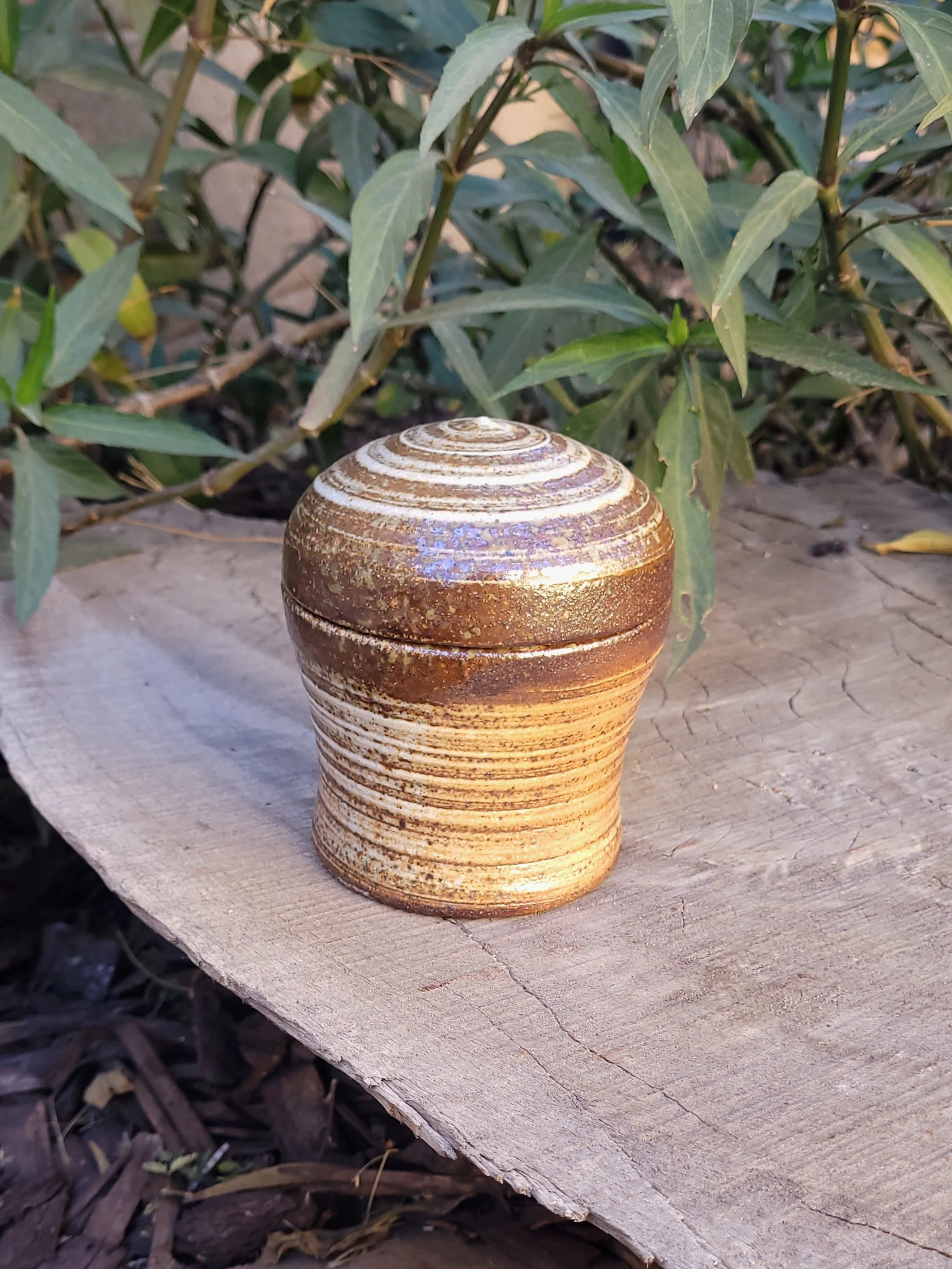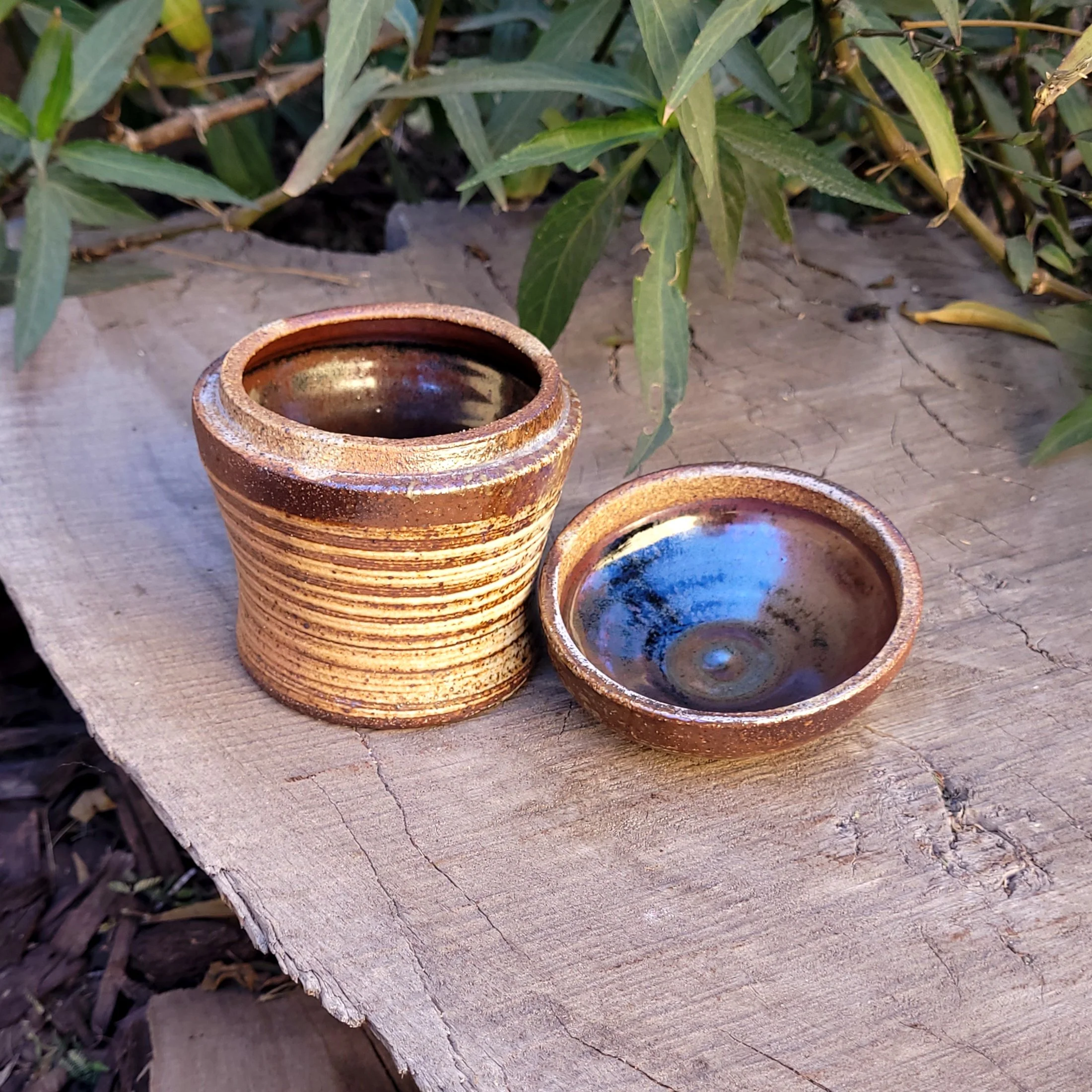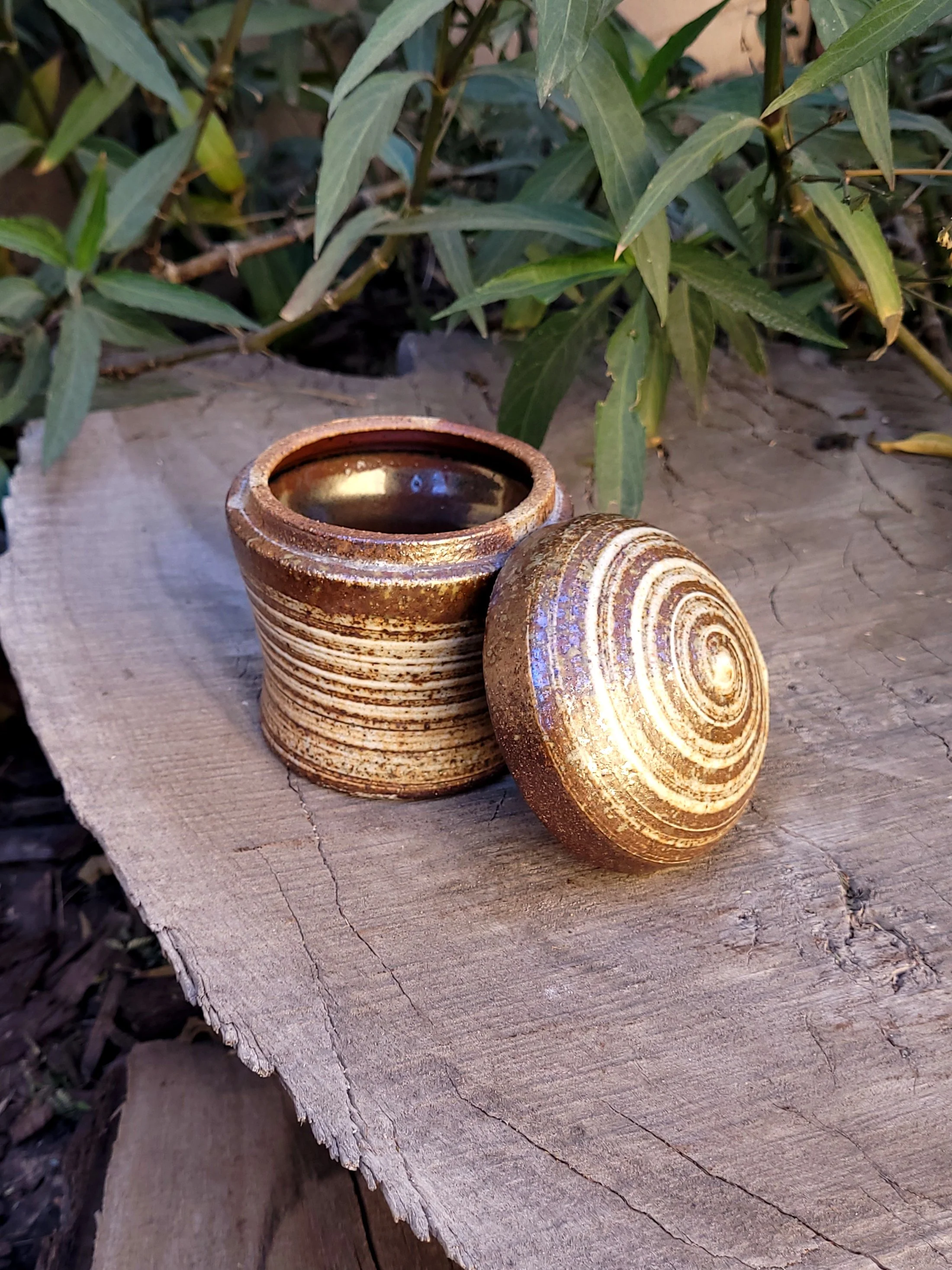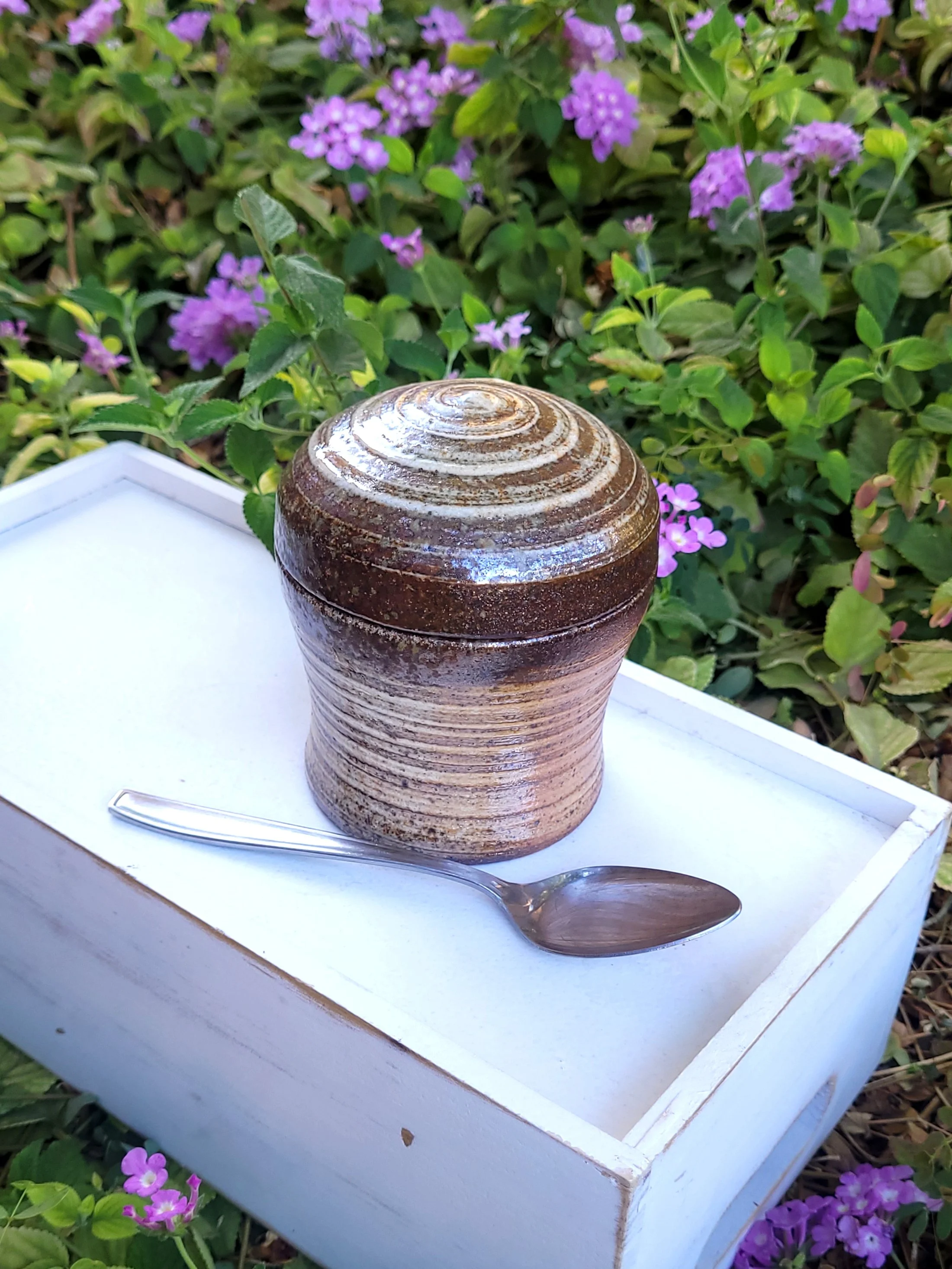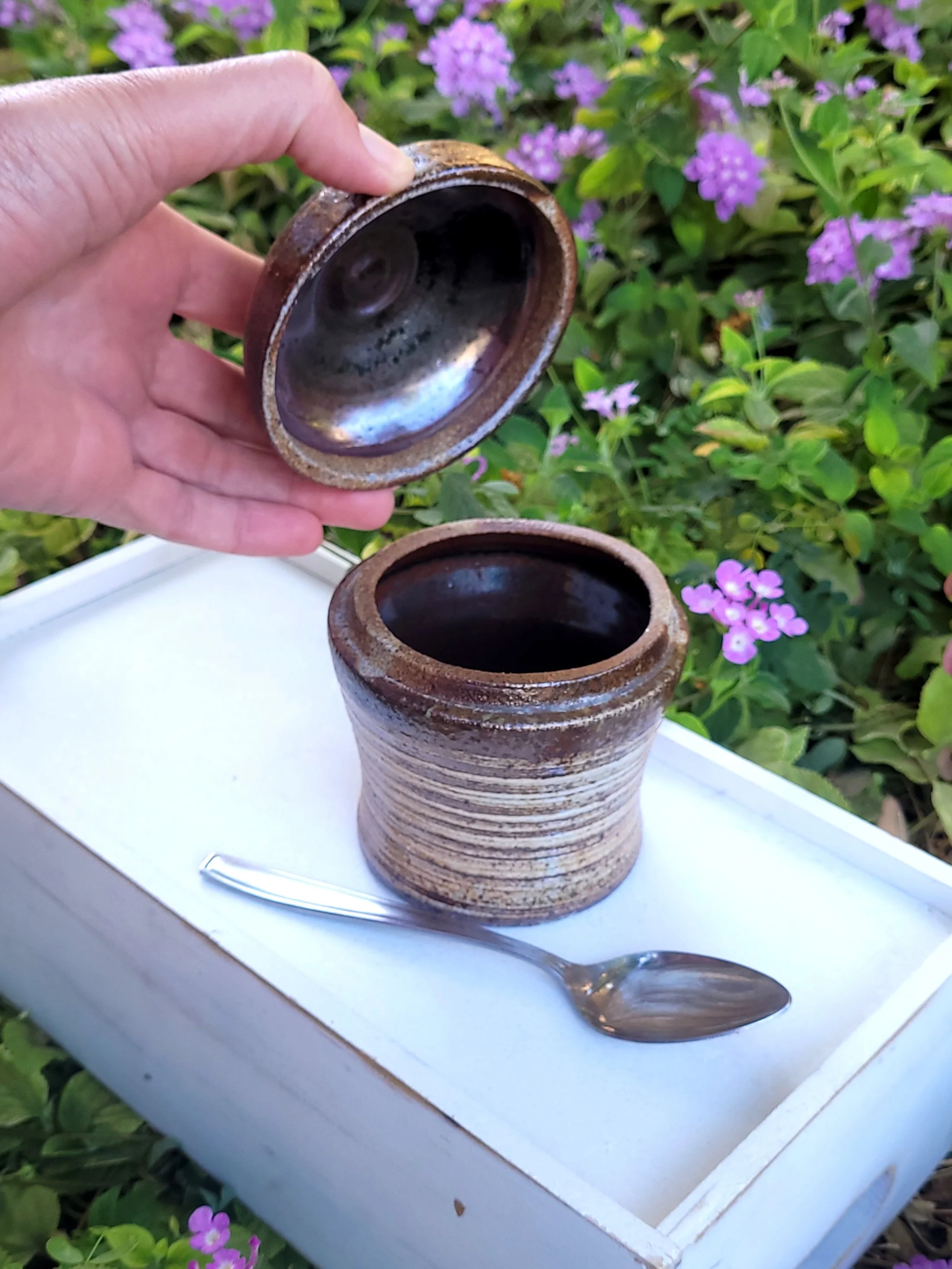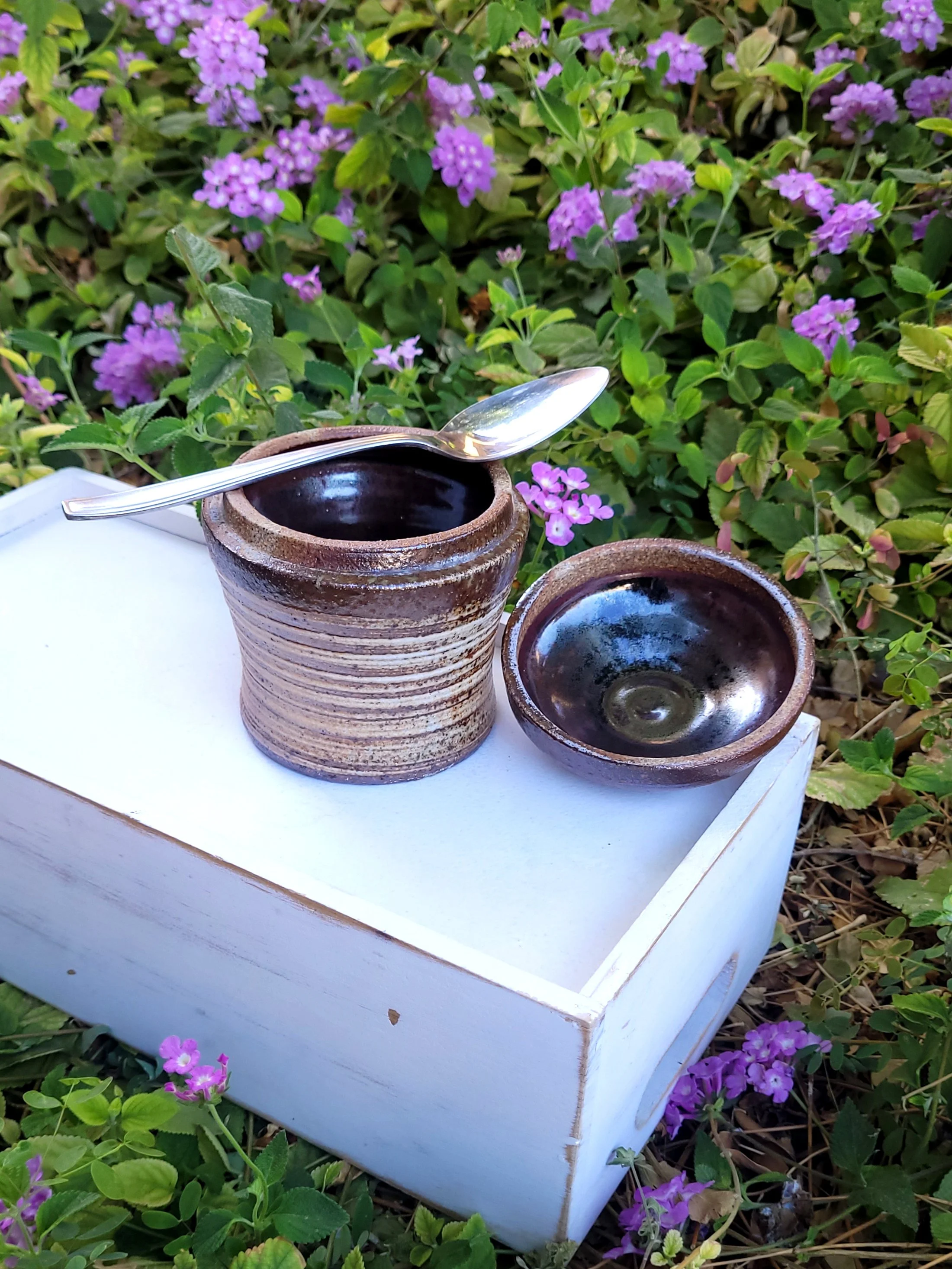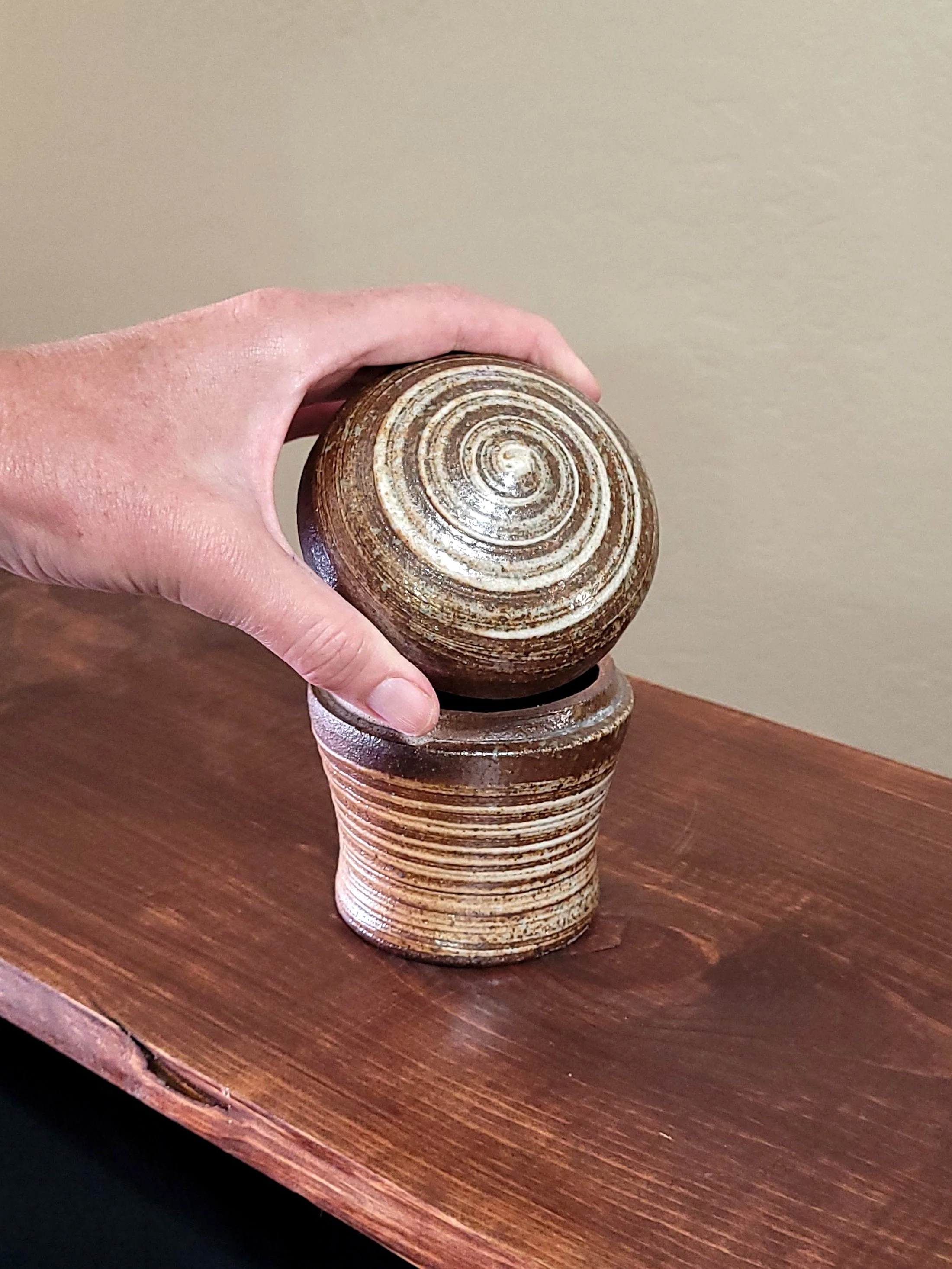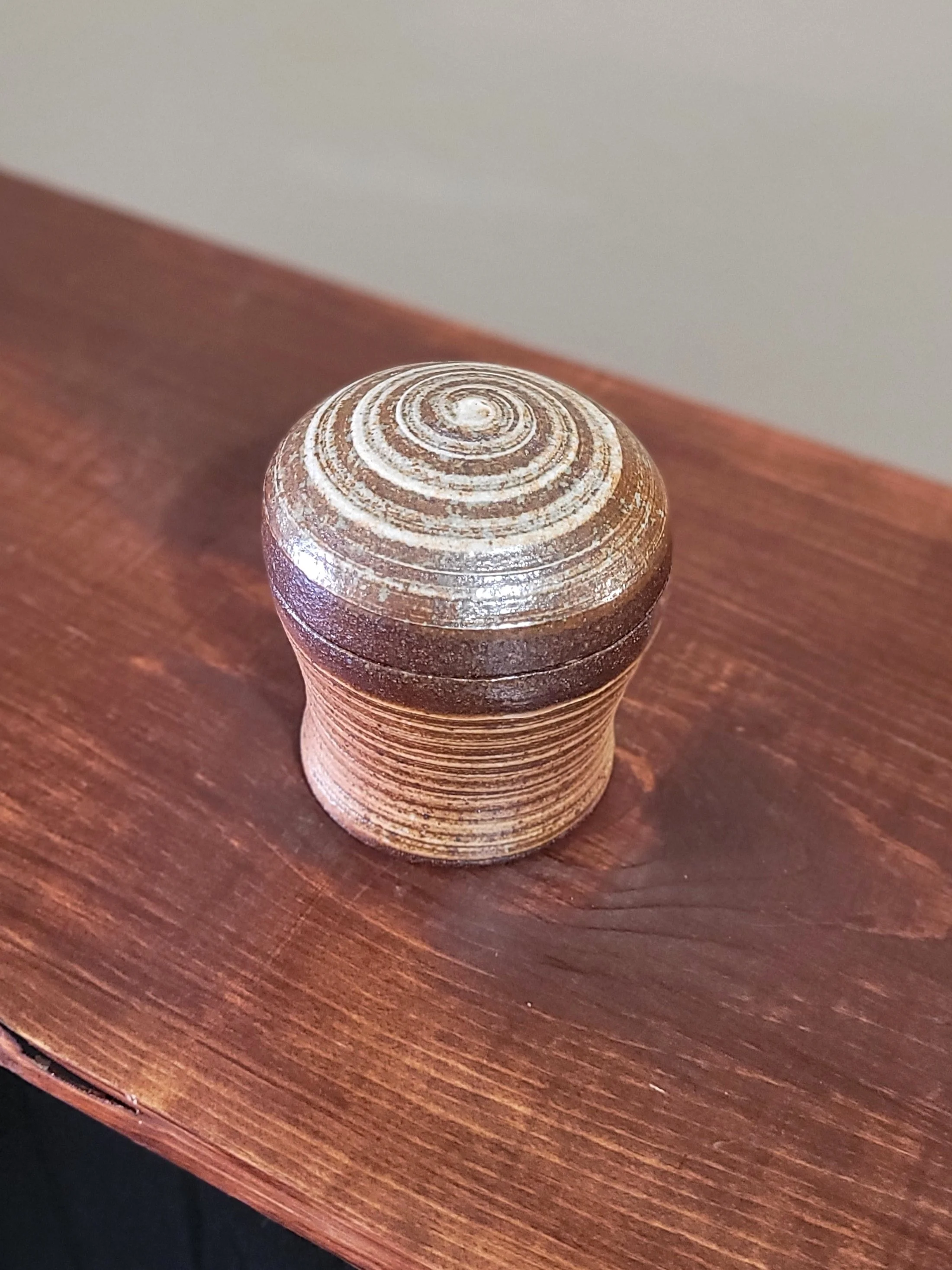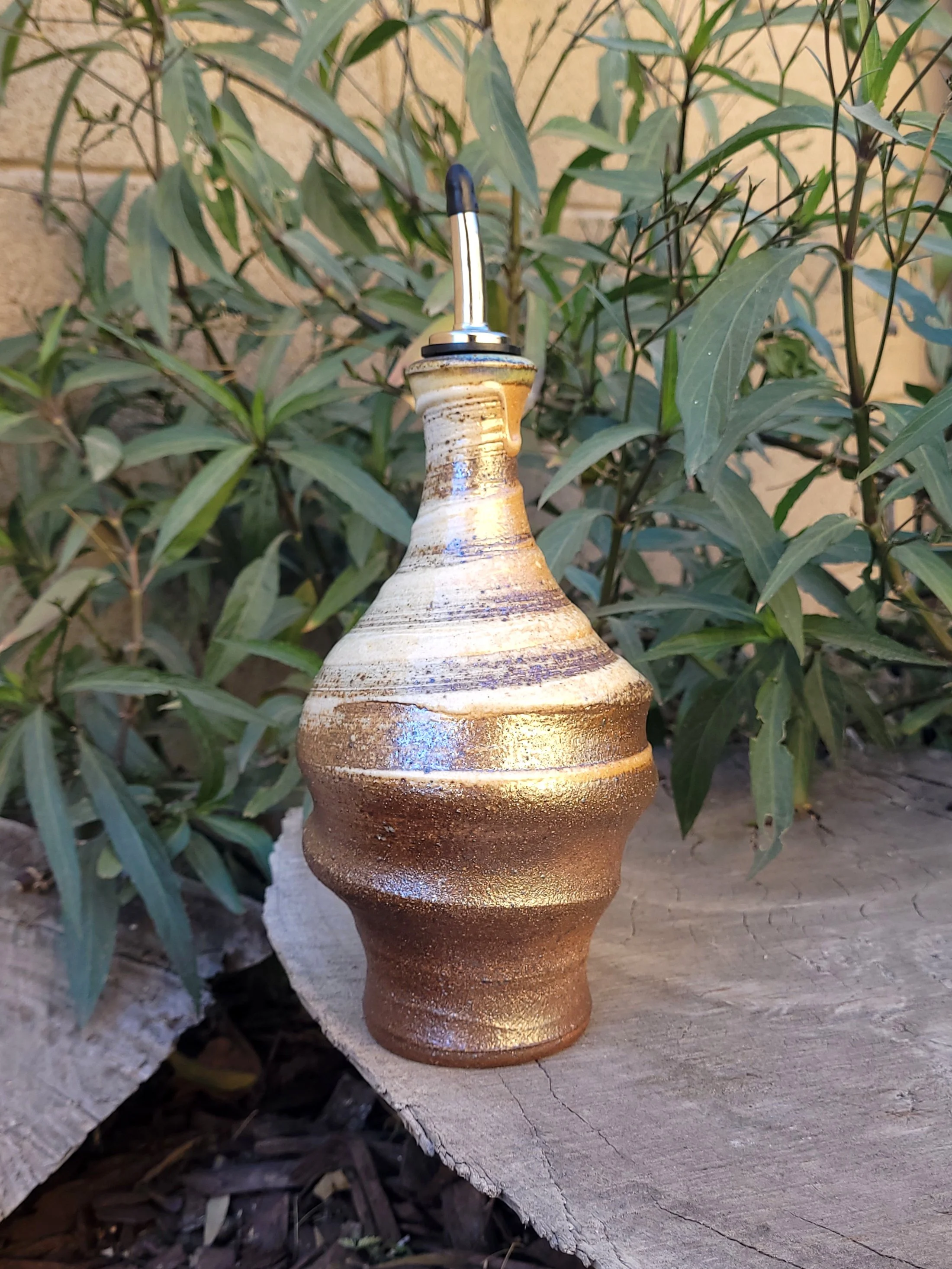Rods Slip Textured Wood Fired Jar
Rods Slip Textured Wood Fired Jar
This pretty wood fired jar could be a fantastic sugar bowl or salt cellar, or a cute jewelry box, or a special keepsake container. The wood fired finish on the dark, bare clay and white slip is naturally rich, and very pleasant to touch. On the interior, tenmoku glaze adds some gloss to the rich cocoa colors of the jar. This piece would blend with many types of decor, and would look beautiful sitting out on any countertop, shelf, or table.
The jar stands about 4 inches tall to the top of the lid, and about 3" tall without the lid. It's about 2 2/3" wide measured across the inner opening, and 3.5" wide at its widest point. It holds a cup. All of my pottery is microwave and dishwasher safe.
This jar was thrown on my potter's wheel using a dark stoneware clay. White slip (clay blended smooth with water) was painted around the body and lid, and a jagged brush was drug through the wet slip to create some texture and color variation. The interior was glazed with tenmoku glaze, and the exterior was left bare. This piece was wood fired to cone 12 at the Desert Dragon Pottery Studio in North Phoenix, AZ.
Wood firing pottery is a traditional method where pottery is fired in a kiln fueled solely by wood, resulting in unique colors, textures, and patterns due to the interaction of flame and ash with the clay surfaces. The process infuses every piece with both the warmth of the fire and the community effort involved in firing the wood kiln.


